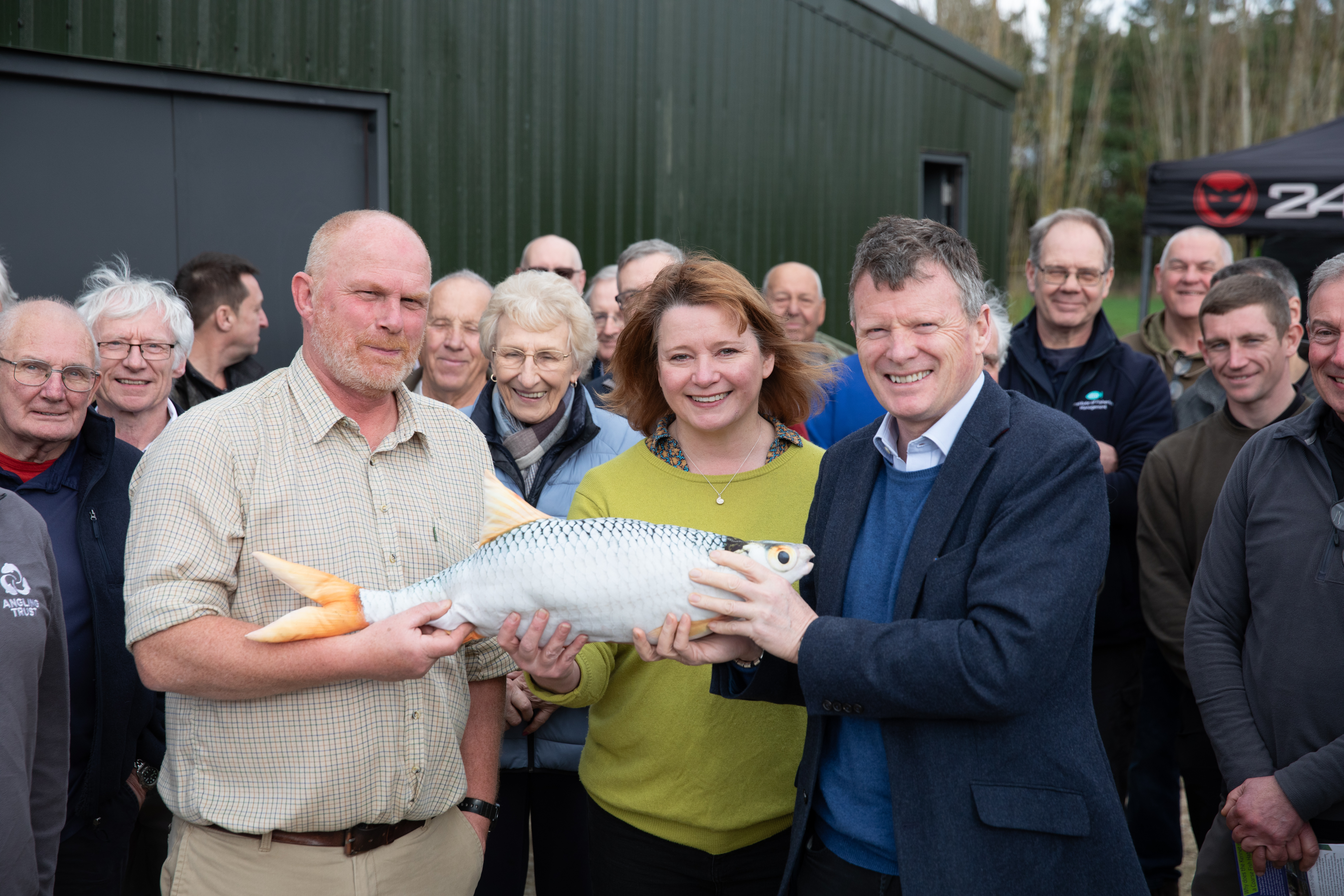Category
Richard Benyon has officially opened a new coarse fish hatchery which local anglers hope will help to replenish stocks of coarse fish in the river Kennet that have been decimated by non-native signal crayfish.
The hatchery, on Englefield Estate land at Lambdens Farm, Lambdens Hill, Beenham, has been created in a collaborative project led by the Reading and District Angling Association, (RDAA) with support from the angling clubs and fisheries along the Kennet Valley.
It was officially opened by Richard Benyon on behalf of the Englefield Estate, on Friday (February 16). The ceremony was attended by anglers and conservationists from the area. The RDAA thanked the Englefield Estate and other supporters and partners for their backing.
The Englefield Estate’s Head of Rural Property and Land, James Meade said: “Anglers play such an important part in protecting and improving our rivers and I am so pleased that the Estate has been able to support this project, lead by the Reading and District Angling Association to open a fish hatchery to help improve fish stocks on the Kennet.”
The hatchery, which will be run as a not-for-profit enterprise by the RDAA, will be managed by the Association’s fisheries manager, Del Shackleford, with advice and support from the Environment Agency and the Institute of Fisheries Management. Local volunteers will assist with the day to day running.
Brood fish will be temporarily removed from the river at the point of spawning and their eggs harvested and mixed with milt from the males, with the resulting fry nurtured in the hatchery until they are big enough to survive in the wild, when around 70% will be reintroduced to the river. The remaining 30% will be kept at the hatchery for longer, to be released later, as mature fish.
The hatchery will begin operating from March 2024 and will mimic the breeding cycles of coarse fish in the wild, starting with dace, followed by roach, chub and barbel. Only brood fish from the Kennet will be used.
The hatchery is the latest measure designed to increase the number of coarse fish in the river, which has been seriously affected by a growth in the number of predatory signal crayfish. They eat their way through fish spawn, prey on the invertebrates that are vital to support young fish and burrow into the riverbanks, adding to the build-up of silt.
In the past ten years a signal crayfish trapper, working for the RDAA, has removed an estimated 100 tonnes of crayfish from the river Kennet – or around 2.5million crayfish.
A build-up of silt from the re-opening of the Kennet and Avon canal in 1990 and a loss of gravel spawning grounds and ranunculus, a river weed that supports the invertebrates on which young fish feed, has also affected the ability of the river to support an abundance of fish.
Angling clubs have worked with the Environment Agency, Action for the River Kennet (ARK) and other partners on a number of initiatives to improve the river quality, including the creation of juvenile fish shelters, adding gravel to the riverbed and installing woody debris.
This has helped improve the quality to the point where the Kennet now supports a population of grayling, a delicate fish that only thrives in the best conditions. A spokesman for the project said: “The presence of mature grayling in the lower river gave us the confidence to believe that a coarse fish hatchery would be a viable project to help restore this wonderful river to something like its former glory.”

(L-R) Del Shackleford, RDAA Fisheries Manager, Heidi Stone Senior Programme Manager at the Enviroment Agency, Richard Benyon of the Englefield Estate